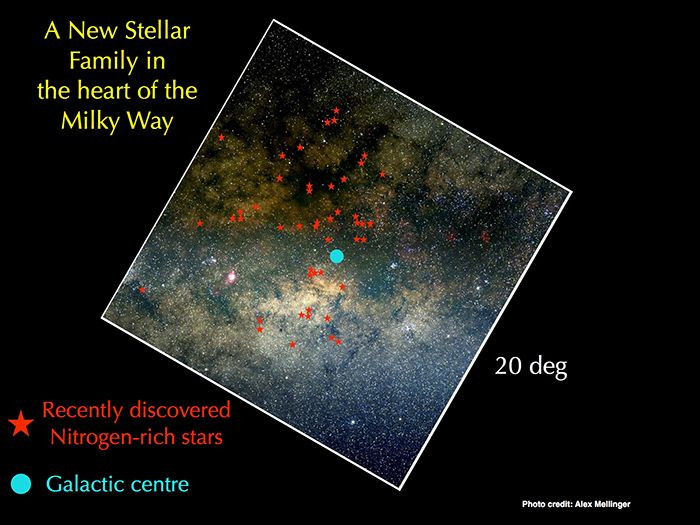Ancient Nitrogen-Rich Stars Near Galactic Center May Shed Light On Milky Way Evolution

Astronomers announced Tuesday they had discovered a family of nitrogen-rich stars near the center of the Milky Way. The stars, found as part of a project known as Apache Point Observatory Galactic Evolution Experiment (APOGEE), may well be the oldest stars in the galaxy, and could provide invaluable information about its evolution.
"This is a very exciting finding that helps us address fascinating questions such as what is the nature of the stars in the inner regions of the Milky Way, how globular clusters formed and what role they played in the formation of the early Milky Way — and by extension the formation of other galaxies," lead researcher Ricardo Schiavon from the U.K.'s Liverpool John Moores University, said in a statement.
Globular clusters are densely packed clumps of thousands, and occasionally millions, of stars that orbit the center of a galaxy. The Milky Way is currently known to have at least 150 such clusters — most of which are roughly 10 billion years old, making them the most ancient stars in the galaxy.
However, astronomers believe that when the galaxy was young, there may have been up to 10 times more globular clusters orbiting its center. The chemical composition of the newly-discovered stars — older stars have higher concentration of heavier elements such as nitrogen — suggests this family may once have been part of these no-longer-extant clusters.
"While not certain, we suspect that these stars resulted from globular cluster destruction," Schiavon said. "They could also be the byproducts of the first episodes of star formation taking place at the beginning of the Galaxy's history. We are conducting further observations to test these hypotheses."
© Copyright IBTimes 2024. All rights reserved.






















